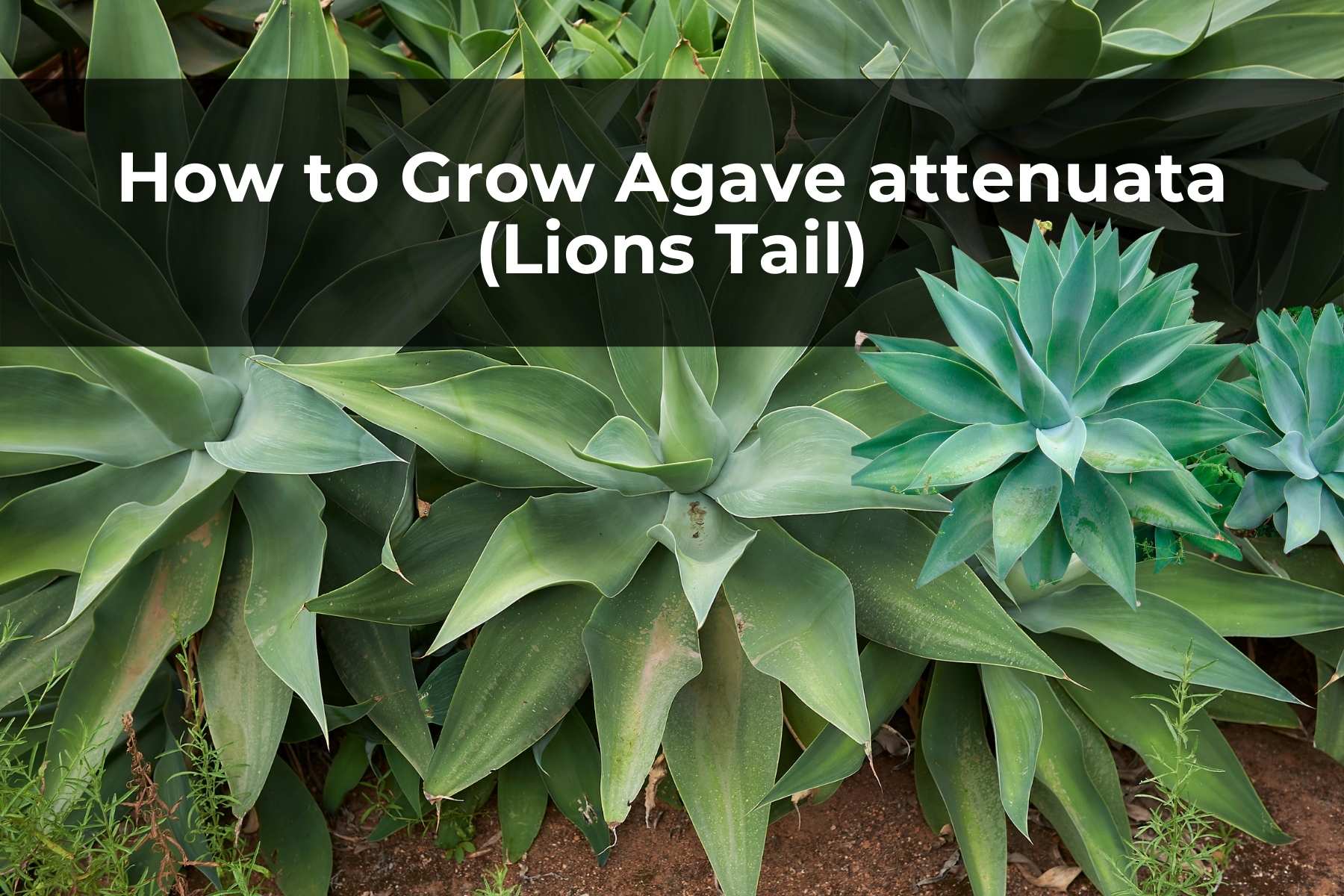Last Updated on April 12, 2024 by Real Men Sow
Agave attenuata can also be called fox tail, dragon tail, lions tail or elephant’s tail. Although it was originally found in Mexico, this plant is extremely hardy and can be found all over the world. It has a thick stem and no branches.
The tapered leaves grow in lush rosettes at their base. The stems of the flower are droopy and bend over which gives it its many nicknames. The flower stems are covered with yellowish-green flowers.
How To Propagate Agave attenuata (Lions Tail)
Pups
- Gently pull the pup out of the parent plant. Each pup should be kept alive by its roots.
- Allow the pup to rest in shade for a few more days, so that a callus may form.
- Fill a small container with soil mixture.
- Place the offset in the soil. Keep the pot in a place that gets a lot of sunlight. It should be watered every time the soil gets dry.
- After the pup has grown a little, you can either repot or plant it outside.
Seeds
- Identify the needs of each species.
- Place the seeds in a container with the soil mixture.
- Add some water to the soil, and cover the pot with plastic.
- Place the pot in direct sunlight and a warm place.
- You can remove the plastic once you see the seedlings begin to form within a month.
General Care Guide for Agave attenuata (Lions Tail)
Light
All Agaves, except Agave attenuata, require direct sunlight. It is best to position the plant in the southeast or south window. You can place it on the veranda or balcony for direct sun exposure in summer. A grow light is required for plants that face north, northwest, or west.
It is possible to provide some shade for them during the day, as too much sunlight could cause them to become burnt.
Soil
Root rot can be caused by excess water in the soil. A moderately acidic to neutral pH is also recommended. To prevent waterlogging, you can add sand. To prevent excess water from seeping out, make sure the pot has a drainage hole.
Water
These plants don’t require much watering. This plant should be watered only after the soil has dried completely. It also needs to be watered only if it is very dry. You should ensure that the plant has good drainage to prevent waterlogging, which can lead to rot.
The frequency of watering can be gradually decreased. You should water once every four days after propagation. After a month, water once every week. You can also adjust your settings depending on the amount of rainfall or humidity.
Temperature and Humidity
Agave attenuata plants prefer hot and dry climates. You can protect them from frost damage by moving them indoors when they go dormant during winter. These plants are also healthier if humidity is controlled.
Fertilizer
The Agave attenuata plants do not require fertilizer. They can still get enough nutrients without it. However, you can add a balanced fertilizer once per year. This plant will thrive on minimal fertilization. It will not bloom too fast and its slow growth will be preserved.
Repotting the Agave attenuata
Agave attenuata is slow-growing and does not require repotting. When young plants outgrow their containers, they should be moved as soon as possible. The new pot should be approximately 2 to 3 inches in diameter. When repotting, be careful not to bury any of the rosette.
Avoid covering the stem with the substrate. For quick drying at the stem’s roots, you can cover the stem with pebbles. This will not limit oxygen flow. When planting, be sure to not bury the neck of your plant. It should be slightly higher than the ground. Planting too deep can cause the plants to turn brown.
Pests and Plant Diseases of Agave attenuata (Lions Tail)
Most pests and diseases are not likely to attack these plants. You should also be careful of the agave weevil, which can lay its eggs on your plant and cause it to fall. You should also take care of the plant to avoid infection and fungus growth, which could cause root rot.

